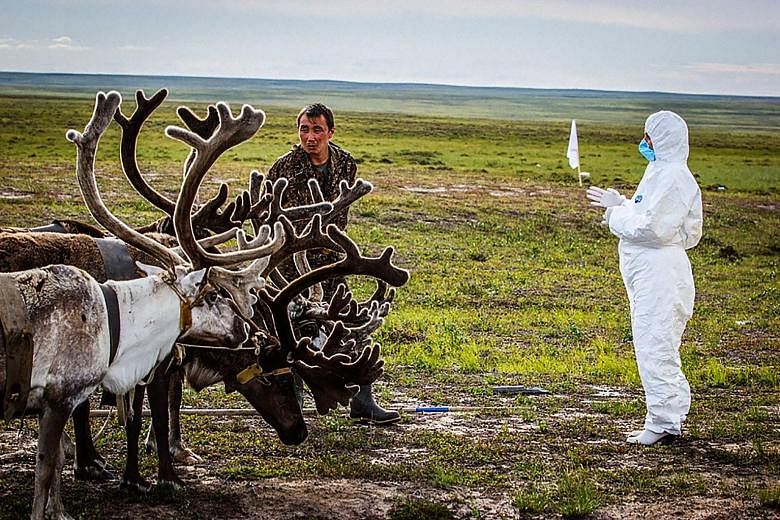MOSCOW • A recent anthrax outbreak in the far north of Russia left a child dead, 23 people infected and the government scrambling to deploy hundreds of rescue workers and soldiers to stop any further spread.
The source, scientists say, seems likely to have been the long-buried carcasses of reindeer on the Yamal peninsula uncovered as Russia's permafrost melts - and then passed on to grazing herds.
The fear now is that this is not a freak incident and that other diseases - some dating back to the Ice Age - could be unleashed as global warming thaws Russia's icy northern expanses.
"Most likely the source of the epidemic were the thawing burial sites for animals that died of anthrax 70 years ago," said Dr Boris Kershengoltz, chief of research at the Russian Institute for Biological Problems of Permafrost Zone. "Can these processes repeat themselves? Of course they can," he told a press conference last week.
Russia is warming about 2.5 times more rapidly than the world's average, and the Arctic region is warming quicker than the rest of the country. Yamal, which straddles the Kara Sea and the Gulf of Ob, is sparsely populated by mostly indigenous nomadic reindeer herders. Temperatures there in July were up to 8 deg C higher than normal, reaching 34 deg C.
"Imagine Yamal, we are talking about a place above the Arctic Circle," said Dr Sergei Semenov, director of Russia's Institute of Global Climate. "This is a colossal, unprecedented anomaly."
Anthrax is an infection spread by spores of the Bacillus anthracis bacterium, which occurs naturally and can be ingested by livestock and passed to humans, usually through skin contact, causing black lesions. If left untreated, it can be fatal.
Besides anthrax, there are plenty of other dangers lurking in shallow Arctic graves which might be unlocked from the ice after centuries, said Dr Viktor Maleyev, deputy chief of Russia's Central Research Institute of Epidemiology. "We had smallpox graves" in the Far North at the end of the 19th century, and scientists are discovering new "giant viruses" in mammoths, he said.
"Their pathology has not been proven, we must continue to study them... I think climate change will bring us many surprises. I don't want to scare anyone, but we should be ready."
AGENCE FRANCE PRESSE

